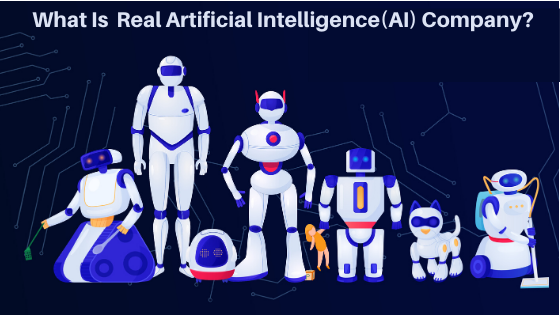AI has been around since the 1950s, but only recently have companies and investors paid much attention to it. Why is AI so excited these days? And how can you see beyond the catchphrase? We will discuss here AI and Real Ai Company.
State of AI
AI is a buzzword today, but it hasn’t always been that way. Just a few years ago, it wouldn’t be very exciting to say that your company works with AI. Demis Hassabis, CEO of Deep Mind, said: “Seven years ago when you said the word AI to a venture capitalist, they rolled your eyes at you. Today they will throw $10 million at you.” Business is embracing AI with open arms, but the problem is that few people really know what real AI is, and companies and VCs have a hard time judging whether a company really works with technology or just takes advantage of the hype.
A survey by London-based venture capital firm MMC found that 40% of European startups that are AI companies do not use the field of study material. So how can you tell if the solutions sold to you are really AI-based? First, you need to understand what AI can actually do for you. You can find out more in our previous article. Second, you need to know a little more about the historical context of the area. Although AI has been around for over 60 years, significant progress has only been made in recent years in creating objects that resemble artificial intelligence.
History
The first intelligent machine was developed by Alan Turing in World War II. This machine, called Bomb, would decrypt the “Enigma” code that the German armed forces use to send encrypted messages. In 1956, the term “artificial intelligence” was adopted for the first time at the conference in Dartmouth. Since then, AI has become less popular due to the lack of computing power and has gone through several “AI winters”. It was not until the late 1990s that AI received considerable attention again. In 1997, IBM’s Deep Blue defeated reigning world chess champion, Garry Kasparov. From there, AI accelerated slowly thanks to exponential data growth, computing power, and hardware improvements.
Read More: Top 10 Best AI Apps 2020
How companies build AI
AI can be a series of if-then statements or a complex statistical model created using deep neural networks. If-Then statements are essentially just human-programmed rules, sometimes they are called rule engines, expert systems, but together they are called good old AI (GOFAI). These systems can be useful for performing repetitive tasks, but they have little to do with real intelligence. You can automate processes, but you don’t learn or improve without human intervention. You all know examples of this technology: most chatbots and accounting systems are based on it. Lack of robustness given the nature of the observed variation in naturally generated data, such as text, is also a problem for GOFA. And this type of AI creation is also very limited in the amount of data it can process. On the other hand, machine learning and neural networks require little or no human intervention. These programs change, are dynamic, and adapt to the data to which they are exposed. Thanks to this, they help people with their work and simplify their daily tasks. However, they may need a lot of data to function well.
The MMC report found that 26% of the study startups company said they used AI to power chatbots. However, it is difficult to assess the benefits that technology will bring to their customers. Chatbots are often difficult to navigate and more annoying than useful – they are only used to reduce the cost of human resources. The reason for this is that, although they are called “AIs”, they are rule-based systems that cannot really understand (see figure above). However, recent AI developments have enabled more complex generations of dialog-based tools that use automatic natural language processing (NLP) and deep learning to understand the meaning and respond in the text.
By transferring the text in vector representations while maintaining a numerical value, it is possible to process the text in a completely new way. The combination of NLP and transfer learning (application of pre-trained models on data) opens up new possibilities in terms of text creation, understanding and translation.
Where’s AI Today?
Natural Language Processing (NLP)
In 2018 we saw remarkable breakthroughs in speech and text. OpenAI GPT-2 generates stories based on short descriptions. The model is built to predict the next word. In contrast to similar models, the context of the entire text is retained by modeling the text so that it is displayed from all entries. Previous Research on Facebook has expanded the toolbox LASER (Language Agnostic Sentence Representation) to work with 93 languages in 28 different alphabets. This model gives good results when classifying multilingual documents and revolutionizes translations. In the future, we expect that the integrations of the language models in question will be largely used in advanced models. ELMO, BERT, and XLNET are further examples of important text display tools.
Computer Vision
One of the most popular areas of the deep learning space – Computer Vision – has also made great strides. Whether for images or video, new frames and libraries make image processing easier. BigGAN is now able to synthesize high-fidelity images and create almost unrecognizable images from real photos. We have seen all deepfake videos of world leaders or artworks that have been brought to life. In the future, we can assume that this technology will be used in a variety of areas such as holograms, teaching, and filmmaking.
Conclusion
I hope you have understood that who is a real AI company. NearLearn is the best Artificial Intelligence institute in Bangalore also provides training on data science, Machine Learning, Deep Learning, full-stack development, Reactjs and React Native and other technologies.
